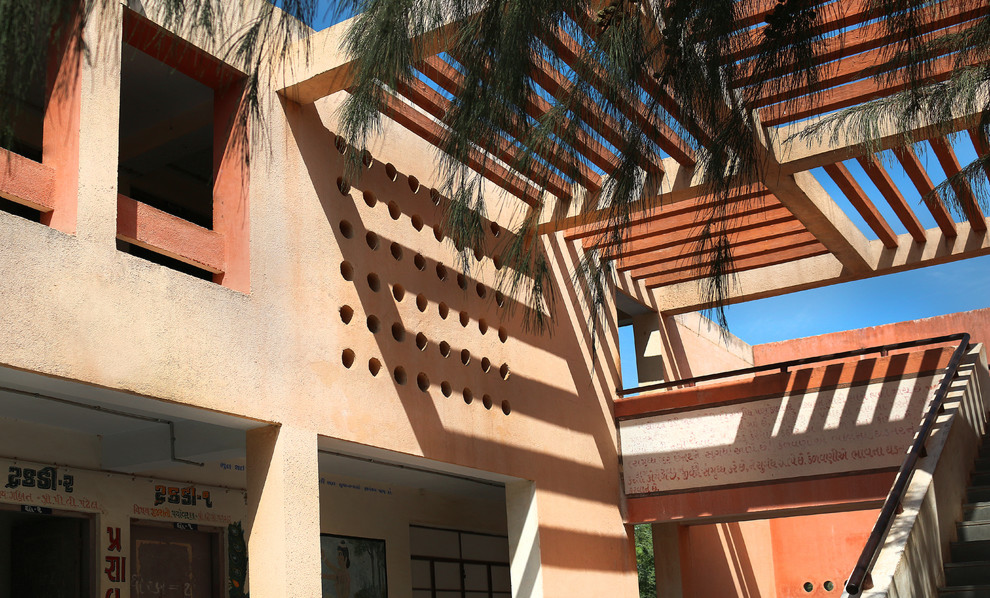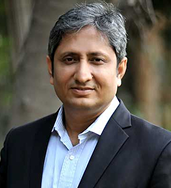Brinda Somaya is an Architect and Urban Conservationist. She is the Principal Architect at Somaya and Kalappa Consultants, Mumbai (SNK). One of the top respected talents in architecture in the country, our Design Essentia Editor Anirudh Datta had a detailed interaction for the DE Spotlight interview series as one of the top Women in Design. Indian Institute of Architects – Baburao Mhatre Gold Medal for Lifetime Achievement Award winner. Over four decades she has merged architecture, conservation and social equity in projects ranging from institutional campuses and rehabilitation of an earthquake-torn village to the restoration of an 18th century Cathedral, showing that progress and history need not be at odds.
the Architect’s role is that of guardian – the conscience of the built and un-built environment.
Over the years, she has won numerous international and national awards. In 2004 Brinda Somaya won the UNESCO Asia-Pacific Heritage award for the restoration of the St. Thomas’ Cathedral in Mumbai. She is also a Leading European Architects Forum award winner for the new Nalanda Schools Campus in Baroda in 2006. She was the first woman to have won the Wienerberger Golden Architect Award for lifetime achievement – a peer award, in 2007. In 2008 a mention was awarded to Brinda Somaya by the UIA (International Union of Architects) Sgoutas Prize for alleviation of poverty for her Bhuj Village Project. Two of her projects were also nominated for the Aga Khan award. In 2013 she was chosen as one of the 100 GLOBAL PUBLIC∙INTEREST∙DESIGN persons working at the intersection of design and service globally.

Kamala House, Ahmedabad, India
Image: Courtesy of Vastu Shilpa Foundation
Anirudh Datta (AD) – What inspired you to pursue a career in Architecture?
Brinda Somya (BS) – One of my sharpest childhood memories is standing in the brick ruins of Nalanda, the ancient university in Bihar at the age of six. The memory was etched in my mind for years. My sister and I were taken to different parts of India and our childhood was spent on getting exposed to the different facets of our culture. Hence, architecture was always there in my mind and there was never any debate or a second choice that I considered for my profession. I completed my Master of Arts degree from Smith College, USA after graduating from the Sir J. J. College of Architecture, Mumbai. In May 2012, I received an Honorary Doctorate from my alma mater, Smith College. I believe that development and progress must proceed without straining the cultural and historic environment. My philosophy is “The architect’s role is that of guardian – hers is the conscience of the built and un-built environment.”
This belief led to the formation of Somaya & Kalappa, the company I founded and have headed for the last four decades. Having designed a swimming pool and support facilities for the Bombay Presidency Golf Club as my first project, I set out into the world of architecture with my own beliefs. You always hear about people who trained and were mentored by prominent architects. My learning experience was difficult and rather isolated.

School of Architecture, now called CEPT University, Ahmedabad, India
Image: Courtesy of Vastu Shilpa Foundation
AD – How do you approach the integration of modern technology with traditional architectural practices?
BS – Integrating modern technology with traditional practices is essential to create structures that are both contemporary and rooted in our heritage. I believe in adopting new technologies that enhance efficiency and sustainability while respecting traditional design principles. For instance, utilizing advanced materials and construction techniques can coexist with vernacular architecture to produce buildings that are innovative yet culturally resonant.
Architecture should serve all segments of society, not just the privileged.
AD – Can you share your experience working on the restoration of the Vikram Sarabhai Library at IIM Ahmedabad?
BS – Restoring the Vikram Sarabhai Library, originally designed by Louis Kahn, was a significant responsibility. Our goal was to modernize the facility to meet current needs while preserving Kahn's architectural vision. This involved meticulous research and collaboration with conservation experts to ensure that any interventions were sensitive to the original design. The project was honored with the UNESCO Asia-Pacific Award for Cultural Heritage Conservation, reflecting our commitment to balancing heritage and innovation.
Social equity is a cornerstone of my practice. Architecture should serve all segments of society, not just the privileged. This philosophy has guided projects like the rehabilitation of earthquake-affected villages, where we worked closely with communities to rebuild in a way that was sensitive to their needs and cultural context. By involving local populations in the design and construction process, we empower them and ensure that the solutions are sustainable and inclusive.
AD – How do you see the future of architecture in the context of climate change?
BS – Climate change poses unprecedented challenges for architects. The future of architecture lies in creating designs that are not only sustainable but also resilient. This means going beyond 'green' certifications to deeply understand the environmental impact of our work. We must design buildings that are energy-efficient, utilize sustainable materials, and are adaptable to changing climates. It's about creating harmony between the built and natural environments.





